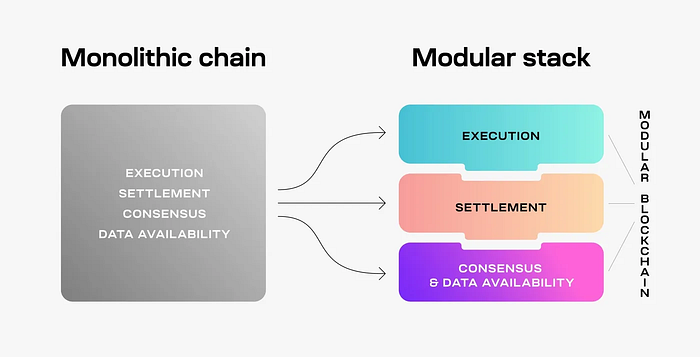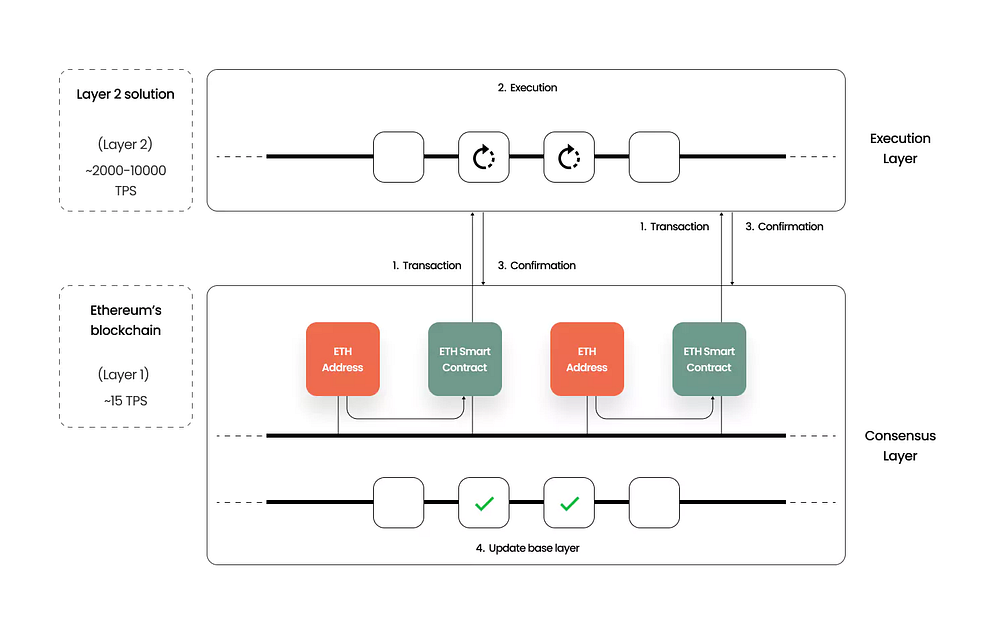Modular Blockchains: The “Crypto’s Fordism”?
We have always thought of blockchains as monolithic, handling everything at once. But high fees, slow transactions, and lack of customization are pushing modular blockchains into the spotlight. Let’s break down how this new approach is reshaping crypto.
We have always been used to thinking about blockchain in a monolithic way, where it takes care of everything. Examples include Solana and Cardano. However, with increasing concerns such as high fees, scalability issues, and even some “product-market fit”, the thesis around modular blockchains has been growing.
Let’s start to think about how a monolithic blockchain usually works.
Every blockchain has the same “core” parts/layers:
- Execution: Execute transactions.
- Consensus: Provide security and determine how transactions will be ordered.
- Settlement: Guarantee that the transaction will be immutable and add to the chain history.
- Data availability: Provide availability of transaction data. Blocks publish data in the network for all peers and this data needs to be available anytime.
A lot of things, right? And here is where the modular thesis comes in. Because a monolithic blockchain needs to take care of all this, the cost of all these responsibilities can be felt in higher fees, scalability issues, more difficulty for nodes to “run” this blockchain (affecting decentralization), and even a lack of customization.
To try to solve this, the modular approach comes in:
Press enter or click to view image in full size

And this is where I start to make a connection with Fordism. How did factories work before Fordism? Everyone did the same thing simultaneously, without any definition or specialization. To solve this, Fordism came along and implemented labor specialization, where we had specific people specialized in the part of the job where they were best.
To show you how this is already a reality in this universe, think about ETH’s L2 (Arbitrum, Optimism, etc.). These L2 are nothing more than a layer focused on “execution”, where transactions are executed cheaper, and faster and then use the security of the Ethereum network for consensus and to register them on the Ethereum network. (Yes, this follows in some ways a theory of “Modularism”).
Press enter or click to view image in full size

Will modular theory be as revolutionary for crypto as Fordism was for factories? We don’t know, but we are already certain that it is already helping our ecosystem evolve and go even further.
Published in Journal of Blockchain Research
DOI: 10.1000/xyz123